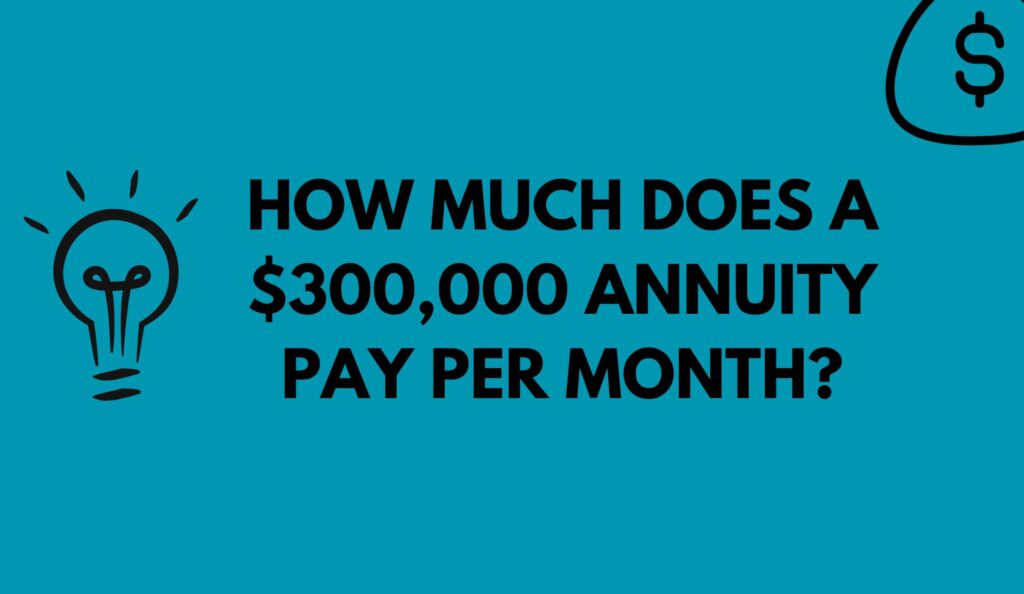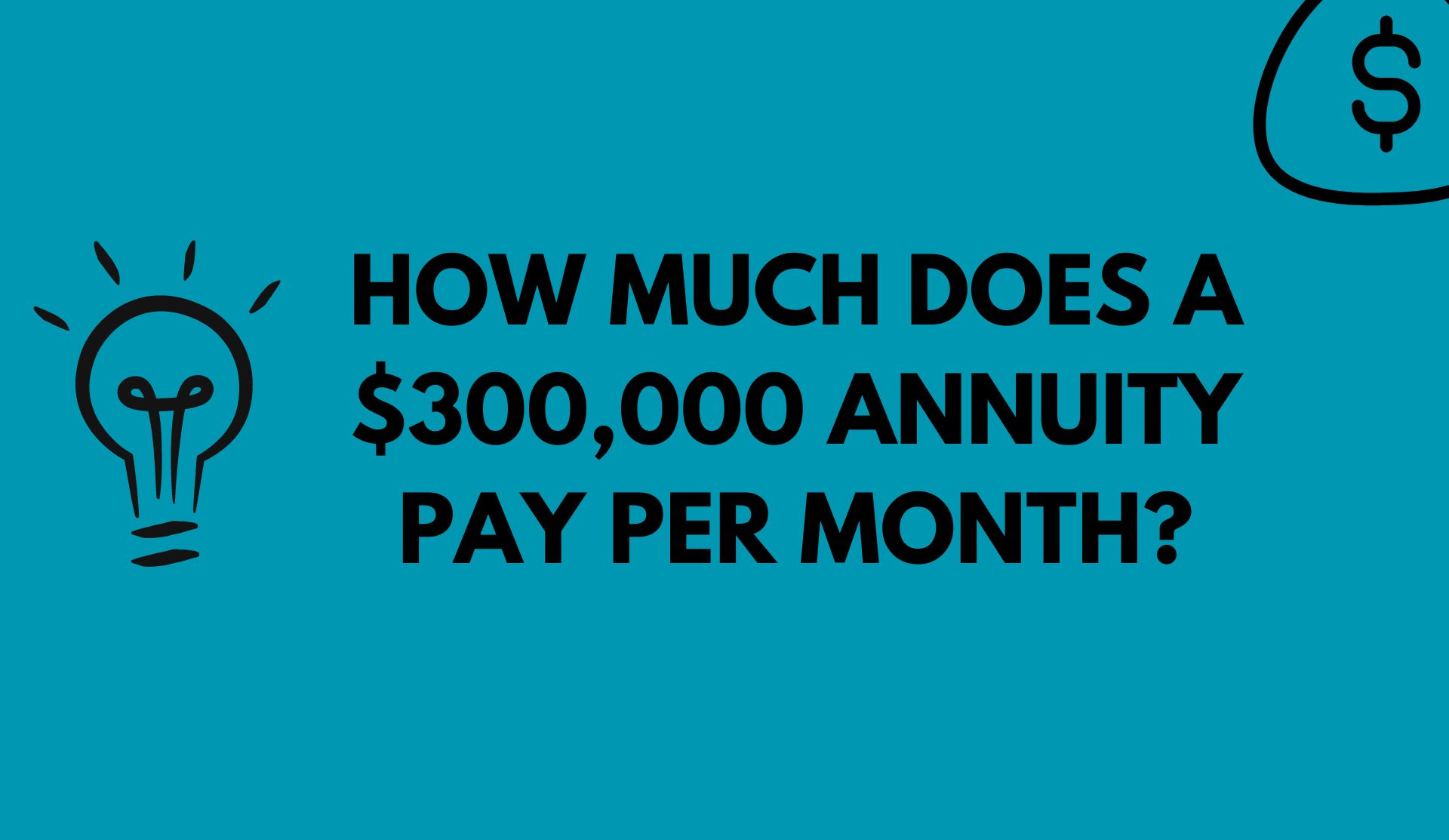
Regarding retirement planning, experts often suggest diversifying your income sources to ensure financial stability during your golden years.
Annuities, a financial product insurance companies offer, are one option worth considering. However, before diving into how much a $300,000 annuity pays per month, it is essential to understand what annuities are, who provides them, and when you can benefit from them.
But before we proceed, a word of caution.
Some may view annuities as benefiting only the companies selling them. In contrast, others believe they are the ideal investment for retirement planning.
This perspective is subjective. Engaging an expert or attorney to thoroughly review annuity contracts to make an informed decision is advisable.
Before taking the plunge, assessing how much monthly income you can expect from it, especially for a $300,000 annuity, is crucial and whether it will suffice for your retirement needs.
What Is an Annuity?
An annuity is a financial arrangement in which you make premium payments to an insurance company in exchange for future payments back to you. There are two primary types of annuities: immediate and deferred.
Immediate annuities start making payments shortly after you pay the premiums, typically within 12 months. On the other hand, deferred annuities begin payments at a future date, allowing you to plan for retirement. You may receive payments either as a lump sum or as monthly instalments, depending on your preferences and the type of annuity you choose.
Annuities can also vary in terms of their growth potential. Fixed annuities guarantee a specific rate of return based on prevailing interest rates. In contrast, variable annuities offer returns linked to an underlying investment or group of assets.
How Much Does a $300,000 Annuity Pay Per Month?
The monthly payout from a $300,000 annuity depends on several factors, including the timing of your purchase, investment choices within the annuity, and the duration it has to grow. An annuity calculator can estimate the monthly income you can expect from a $300,000 annuity or any other amount.
Let’s consider an example: Suppose you are 43 years old and purchase a $300,000 deferred annuity today to start withdrawals at age 65. Your annuity provider typically offers four payout options, each yielding a different monthly income. Here’s a breakdown of how much a $300,000 fixed annuity might pay per month:
- $3,517 for single life only, providing income for life without a death benefit for your beneficiaries.
- $3,474 for a single life with a 10-year certain, offering income for life with additional payments to your beneficiaries if you pass away within the first 10 years of the payment period.
- $3,357 for a single life with a 20-year certain, extending the payout window for beneficiaries to 20 years.
- $3,504 for a single life with cash refund, ensuring lifetime income while providing your beneficiaries a lump sum equal to the original investment, minus any payments made.
Imagine you’re 65 years old and opt for an immediate annuity with payments starting immediately. Using the same four payment options, here’s how much a $300,000 annuity would pay in monthly income:
- $1,635 for single life only, offering income for life without a death benefit for your beneficiaries.
- $1,656 for a single life with a 10-year certain, providing income for life with additional payments to beneficiaries if you pass away within the first 10 years of the payment period.
- $1,569 for a single life with a 20-year certain, extending the payout period for beneficiaries to 20 years.
- $1,599 for a single life with cash refund, ensuring lifetime income while providing your beneficiaries a lump sum equal to the original investment, minus any payments made.
Please note that these calculations assume you are the sole recipient of income from the annuity during your lifetime, with specific options allowing for payouts to named beneficiaries. Suppose you’re married and want your spouse to receive annuity payments after your passing. In that case, the monthly income may be lower, depending on your respective life expectancies.
How Much Monthly Income Can I Expect From an Annuity?
The monthly income generated by an annuity primarily hinges on its type, face value, and the interest it earns. Monthly payments can range from a few hundred dollars to several thousand. Generally, larger annuities with extended deferral periods tend to yield larger monthly payments.
The more pertinent question is: How much monthly income do you need your annuity to generate? To determine if an annuity suits your retirement plan, consider your existing income sources, which may include:
- 401(k) distributions
- Traditional or Roth IRA withdrawals
- Dividend income or capital gains from taxable investments
- Passive income from real estate investments
- Social Security benefits
- Interest income from certificates of deposit (CDs) or money market accounts
- Liquid savings in a high-yield savings account
- Current income from part-time work or a side business
Evaluating these sources will help you gauge the necessity of an annuity and determine the ideal size to meet your retirement income objectives.
Seek Expert Guidance
Consulting with a financial advisor or annuity expert can be invaluable if you are considering an annuity. Annuities and annuity providers vary, and navigating these financial products can be complex. A financial advisor can assist you in assessing your retirement income requirements and recommend the annuity type that best aligns with your circumstances.
In conclusion, annuities can complement your retirement income, but they are not a one-size-fits-all solution. Suppose you’re contemplating a $300,000 annuity. In that case, understanding how much it can contribute to your monthly income during retirement is crucial to determine if the initial investment is worthwhile. Don’t hesitate to contact a financial advisor for guidance, as they can help you make informed decisions and tailor an annuity plan to suit your financial goals. Remember, thorough research and expert advice are crucial to securing a comfortable retirement.
Reference: Yahoo Finance










